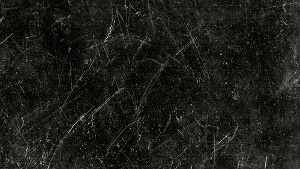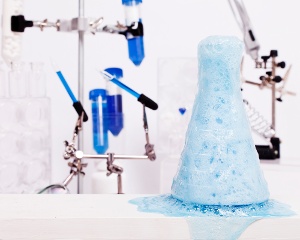Solid surface countertops are a significant investment for any lab. The last thing you want to hear as a lab manager is that this investment has sustained damage.
Don’t panic. The good news is that in many cases, solid surface countertops can be easily repaired, saving you the costs associated with replacing them to fix the problem.
Repair methods often vary based on the type of damage, from scratches and stains to more severe damage. Here are some tips to guide you through the repair process as well as how to prevent common accidents in the workplace.
An important note before we begin: While these tips below can help you with any solid surface countertops repair and damage prevention efforts, it’s important that you check with the manufacturer of your work surface for instructions that may be applicable to your specific product. Special finishes or designs may call for different repair methods.
If Your Solid Surface Countertops Are Scratched
Solid surface countertops contain a non-porous, homogeneous material that consists of the same composition throughout. Because of this, many repairs, including scratches, can be repaired onsite.
same composition throughout. Because of this, many repairs, including scratches, can be repaired onsite.
In fact, employees can often perform most scratch repairs using a mild abrasive cleaner to “buff” out the scratch.
To restore a matte finish, countertop manufacturer Corian recommends first washing the area where the scratch is located with hot soapy water. This removes any film that has accumulated on the surface.
To remove the scratch, use P240 grit sandpaper or 60-micron paper. Repeat washing the area to remove any residue, and then buff the scratch with a Scotch-Brite pad (7447 A VFN) in a circular motion.
If your Corian countertops have a semi-gloss or gloss finish, repairing scratches can be more complex.
To restore a semi-gloss finish, Corian recommends using the same type of grit sandpaper or micron paper throughout the entire sequence.
- Light colors: Use P240 grit sandpaper or 60 micron paper initially. Wash and then use P400 grit or 30 micron paper. Wash again to remove any residue that has accumulated. Then, buff the area using a Scotch-Brite pad (7448 S ULF) in a circular motion.
- Dark colors: Use P240 grit sandpaper or 80 micron paper initially. Wash and then use P400 grit of 60 micron paper. Wash again and use P600 grit or 30 micron paper. Wash to remove residue. Use a Scotch-Brite pad (7448 S ULF) in a circular motion.
For deep scratches or scratches that cover a larger damaged area of semi-gloss countertops, as well as for all scratches on high gloss finishes, the manufacturer recommends seeking a professional service. A repair company will typically use special tools like orbital sanders and low-speed polishers to repair the surface and create a new uniform finish.
If Your Solid Surface Countertops Are Cracked
Mid-range repairs like cracks may require more care than a scratch or nick, but staff can often take care of these issues. If the work surface develops a crack, manufacturers recommend first chilling the area next to the crack with an ice pack.
First, draw a line directly next to the crack with a pencil (within 1/16th of an inch). Chill the surface adjacent to the crack on both sides for at least 45 minutes.
Clean the break with a bristle brush (like a toothbrush) dipped in hydrogen peroxide. Heat the crack with hot air (such as with a hot blow dryer) until it disappears, and then fill it with industrial-grade cyanoacrylate glue (you should be able to see your pencil mark for guidance). Sand the surface using 220-grit paper, followed by 400-grit paper. You can also give it an extra buff by using an ultra-fine grade Scotch-Brite pad.
You can also use solid surface material repairing epoxy to fill in any cracks. If the epoxy filler color doesn’t perfectly match your solid surface countertop, you can mix in drops of paint in coordinating colors.
Again, you’ll want to wait until the epoxy hardens and then sand the area, first using 120-grit paper and working up to using 400-grit paper. Ultra-fine Scotch-Brite pads can finish the project.
If Your Solid Surface Countertops Are Stained
Hard water is a common occurrence. Over time, it can build up and leave stains and blotches on your solid surface countertops.
on your solid surface countertops.
If removing these stains is difficult, manufacturers recommend applying a “Viakal” gel over the area. Leave the gel on the surface for two to four minutes and then remove it with a damp microfiber cloth.
Employees should then use a second clean microfiber cloth to rinse the area with water thoroughly.
For stains from vinegar, dyes, citrus, juices and blood, workers can use a damp cloth and a small amount of mild abrasive cleaner. Use cleaners made with oxalic acid to remove brown stains for solid surface countertops with matte or semi-gloss finishes.
If Your Solid Surface Countertops Sustain Heat Damage
While there are many advantages to having solid surface countertops in your lab (here are some solid surface countertops pros and cons), there are some disadvantages as well, one being that they are not resistant to high heat or open flames.
You can use a light abrasive cleaner and a light abrasive scrubbing sponge to clean the area for small burn marks. Do not use harsh abrasives on the countertop. If you do, you run the risk of doing more damage to the surface.
For deeper heat damage, it’s often best to consult a solid surface countertop repair contractor or the manufacturer.
How To Prevent Damage To Your Solid Surface Countertops
Prevention can go a long way in keeping accidents at bay. In addition to the tips outlined above, here are five additional tips to keep in mind after solid surface countertops installation occurs.
- Wipe up spills as soon as they occur. Use a damp microfiber cloth and a non-abrasive spray or warm soapy water. Avoid window cleaners, which can leave a residue. Always use a circular motion.
- Use heat protection. Because solid surface counters do not withstand high heat, it’s important to use a heat protection pad or trivet. Never put hot tools or items directly on the surface. If boiling water into the seak, run cold water from the faucet simultaneously to lower the temperature.
- Do not cut or chop directly on a solid surface. Sharp objects can scratch the surface, and these scratches can be especially visible in dark colors. Use a chopping board instead.
- Disinfection is OK as long as you follow the manufacturer’s recommendations. It is generally OK to disinfect your solid surface countertops using diluted household bleach. The Centers for Disease Control and Prevention recommends a 1:100 ratio for disinfection. You can also use a powdered abrasive cleaner with bleach, though it’s only usually recommended to use this method if you have a matte finish since this process can dull a semi-gloss or gloss finish.
- Wipe up residual water. While solid surface countertops are nonporous (one of their most attractive features), cleaning up any residual water that spills on the surface is still important to avoid film build-up. This film can eventually dull the surface, which will make your countertop appear uneven and blotchy. Use a microfiber cloth.
In our article, How To Clean Solid Surface Countertops: Do’s And Don’ts, you can read more about how to maintain your work surface.


